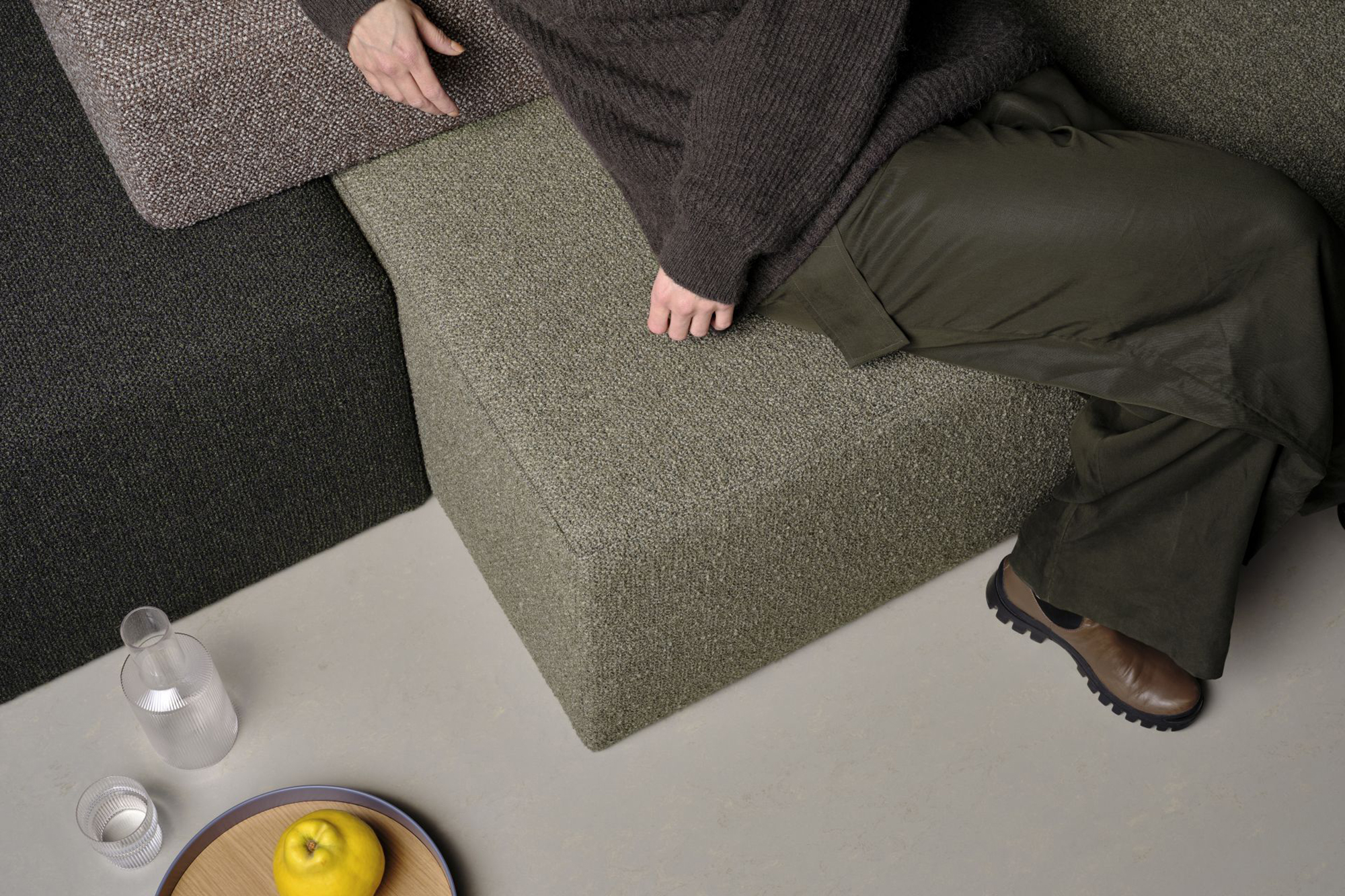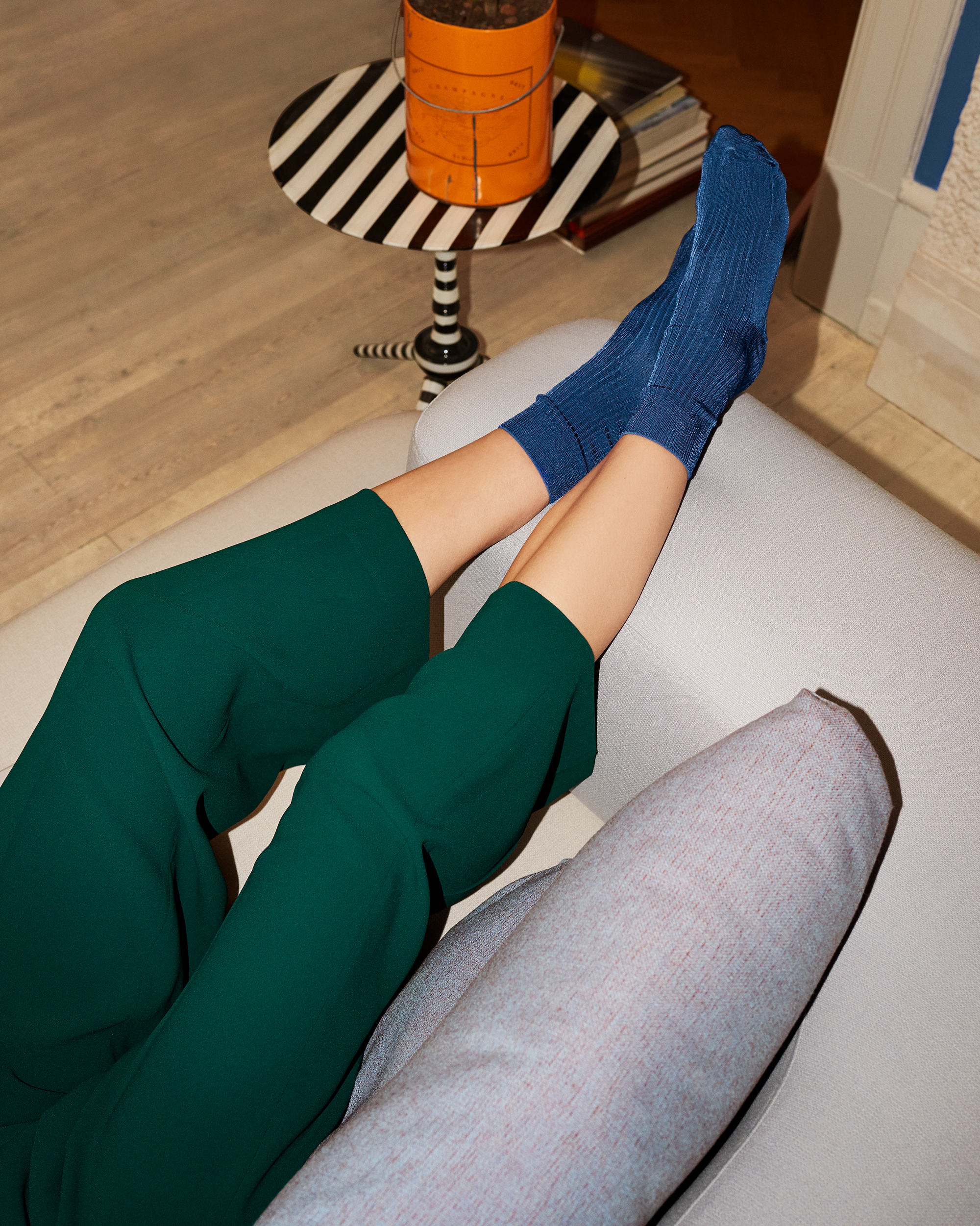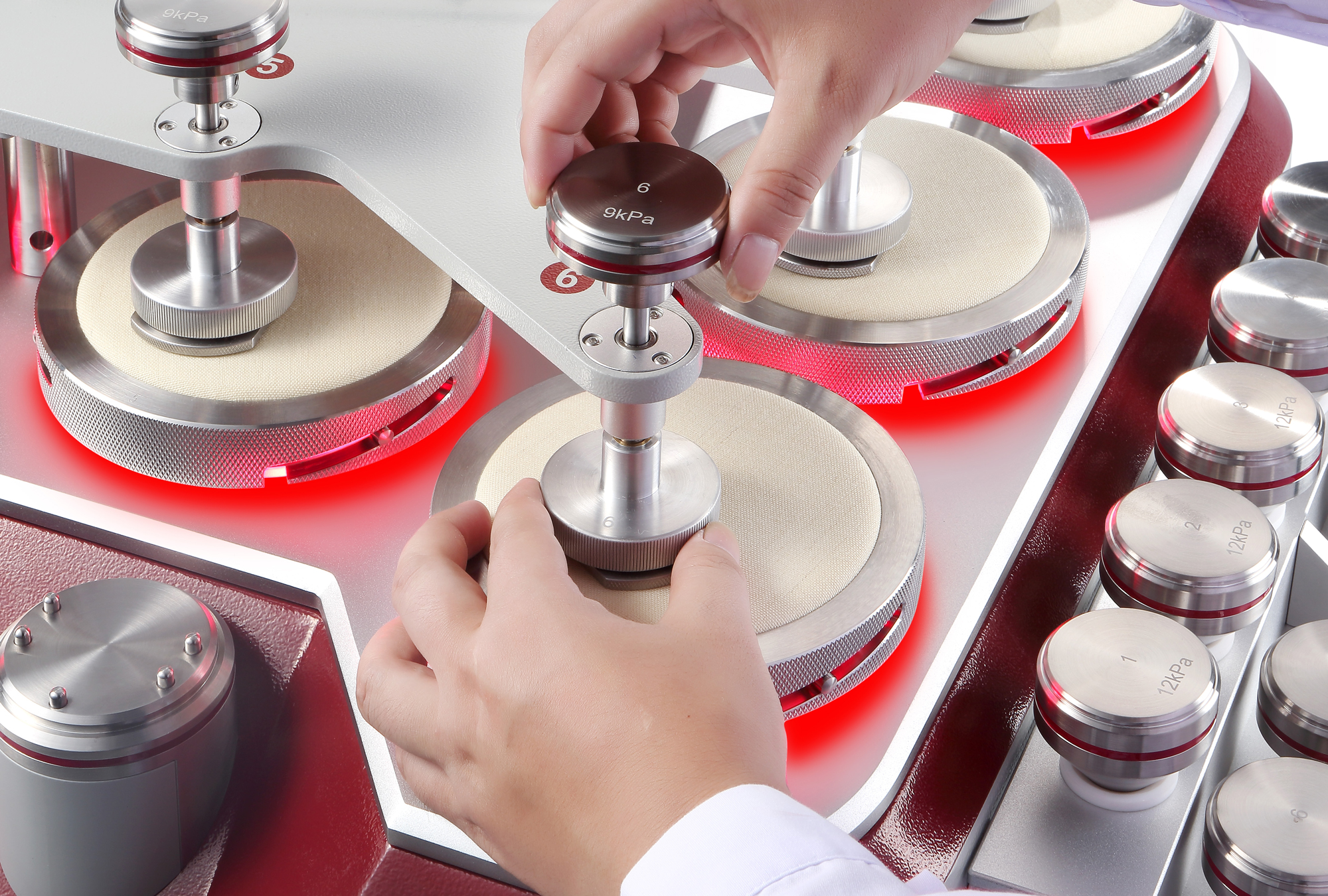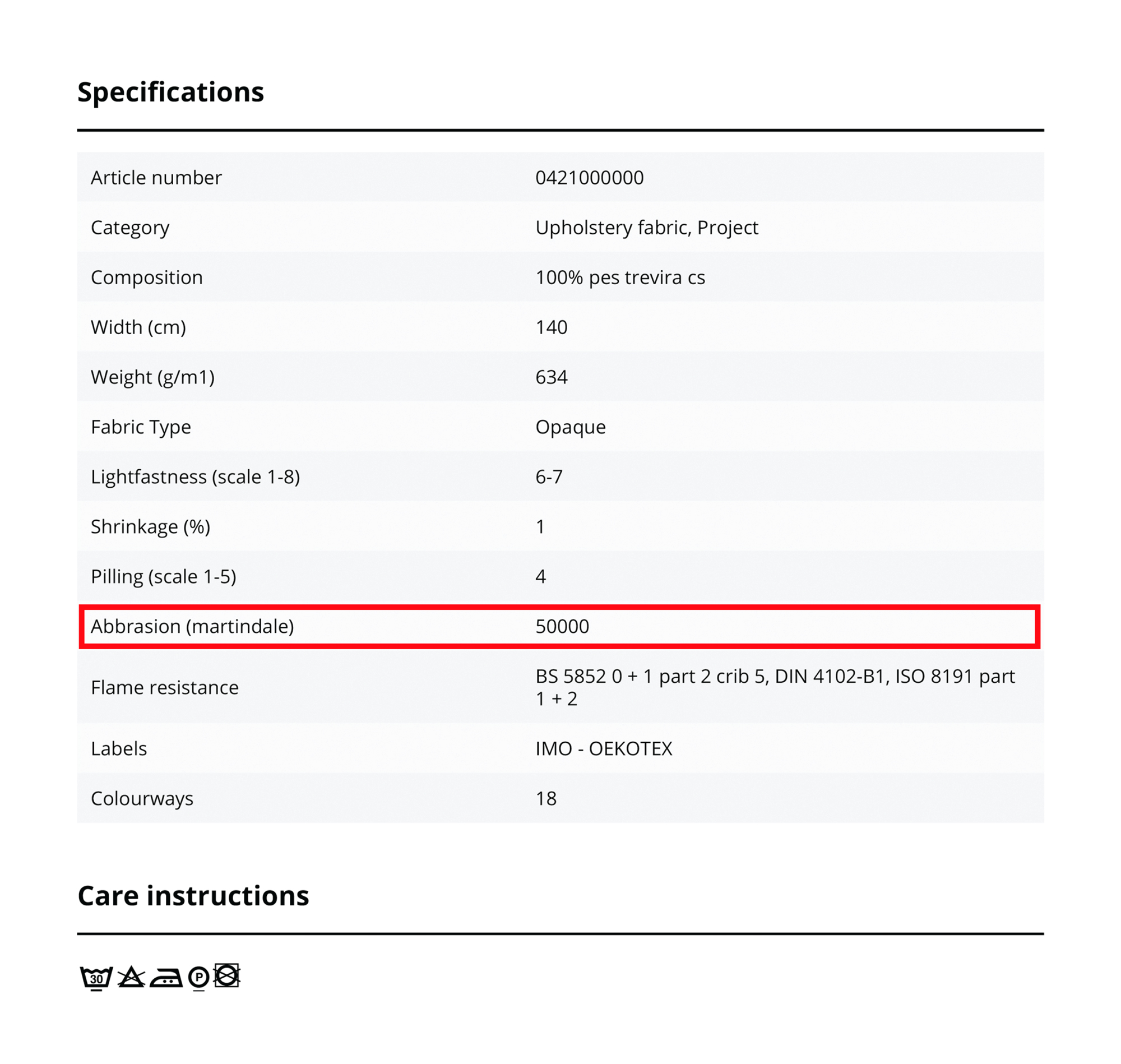If you’ve ever bought upholstered furniture or decorative items covered in fabric, you’ve probably stumbled upon the Martindale rating. Most people know that the higher the number on a Martindale test, the better. This also reflects in the product’s price. However, not everybody knows exactly what this rating means or what the test actually tests. We’ve put together a practical guide, complete with answers to the most searched questions about the Martindale fabric test. By the time you’ll reach the end, you’ll find out everything you need to know about this international standard rating and why it matters.
Named after its inventor J.G. Martindale, the Martindale test – also known as a rub test – is specially designed to test the abrasion resistance of textiles. After all, it’s important to know if pieces of upholstered furniture can handle heavy use. For example, maybe you want to buy a sofa for the family living room, a piece of furniture that will look great even after years of your kids climbing or jumping on it. Or maybe you want to get an office chair for your home workspace, a chair you aim to use every day. Or a cozy lounge chair for the special relaxing moments you plan to enjoy over the weekends. Knowing the Martindale rating for the furniture’s fabric will help you choose wisely. This rating also applies to furniture designed for offices, hospitality settings, and commercial spaces.
What is the Martindale abrasion Test?
The Martindale test is specially designed to measure the resistance to abrasion of soft fabrics, especially textiles used in upholstery. The tests quantify the materials’ durability and suitability for different uses, meaning that furniture companies can indicate whether a chair suits only a decorative purpose, a residential space or a public area, including buses or trains. Consequently, the Martindale rating matters if you want to know the durability and wear resistance of upholstered furniture before you buy it.
How does the test actually work?
Testing the fabric requires the use of an abrasive surface with a specific force on a piece of sample material stretched onto the lower plates of a Martindale machine. The testing machine features rotating discs of worsted wool, wire mesh, or sandpaper that rub against the textile in a circular motion. Operating in intervals of 5,000 cycles, the equipment tests how long it takes for the fabric to either tear or show signs of wear. Any sign of damage signals the end of the test. The number of cycles the fabric withstood abrasion represents the Martindale rating. Recognized internationally, the test measures the suitability of soft furniture for different applications.
What is a good Martindale rating?
The short answer: it depends on the furniture and its use. For example, a rating of 6,000-10,000 is good enough for decorative objects and accessories. Think items that you don’t handle frequently but use to create a focal point in a room or to bring a pop of color into a neutral space. For residential furniture and light general use, a Martindale rating of 15,000-25,000 is good. Heavy-use domestic furniture, however, requires a higher rating. This covers sofa beds, which go through frequent friction as the user opens and closes the piece of furniture.
What does Martindale rating mean?
A Martindale rating indicates the level of abrasion resistance of fabrics. The more resistant to abrasion a textile is, the longer it lasts in the Martindale test, which means that it took a higher number of rubbing cycles to damage the surface of the material. Decorative use objects generally have a rating of 6,000-10,000, meaning that after that number of circular motions, the rotating discs of the Martindale machine left a mark on the textile. Put more simply, this decorative fabric resists abrasion only until it reaches 6,000 cycles. A heavy-duty material will resist abrasion much better, even reaching a rating of more than 30,000.
What is the purpose of abrasion test?
The purpose of the abrasion test is to find the abrasion resistance for furniture and items covered in textile materials. The rating is important, as a more delicate fabric will tear in heavy-use conditions. For commercial and public spaces with heavy-duty usage, only the strongest and most durable fabric is suitable for furniture. Think bus and train chairs, seating in waiting areas in an office or shop, restaurant seating, and similar public spaces.
What do the numbers mean?
The Martindale fabric rating can vary widely from one material to another. Choosing the right textile for a specific use and environment is important. If you want to know exactly where and how you can use a fabric with a rating of 6,000 or one of 25,000, we’ve got you covered.
As we’ve already mentioned, any rating between 6,000 and 10,000 indicates that the fabric has a low level of abrasion resistance. These products suit decorative purposes. Between 10,000 and 15,000, you can find textiles that suit light domestic use. This category includes furniture you only use rarely or more delicate items you can dry clean only.
For general domestic use, choose upholstery with a rating of over 15,000, but preferably over 20,000. These fabrics suit chairs, sofas, and other upholstered items you use every day, but not products meant for heavy-duty use, like recliners and sofa beds. Any motion furniture and sofa beds you open and close frequently should have a Martindale rating of at least 25,000 or 30,000. Furniture that has a rating of more than 40,000 suits heavy commercial use.
What is abrasion in textiles?
In textiles and fabric upholstery, abrasion refers to wear and the rubbing of fibers either against one another or against other objects or materials. Textiles with a low resistance to abrasion will show signs of wear sooner compared to stronger materials, as the yarns will weaken or even tear over time and with use. An abrasion test like the Martindale test can clearly show the abrasion resistance of fabrics.
What about the Wyzenbeek test?
If you’re from the US or North America, you’re probably familiar with the name of Wyzenbeek. While Martindale is the international standard and generally considered more accurate, the Wyzenbeek method is also used in North America to test fabrics. These tests are similar, as they measure fabrics’ abrasion resistance. If Martindale machines use a circular motion or a figure 8 movement, the Wyzenbeek method requires the rubbing of another fabric or wire mesh in a back and forth motion across the weft and warp directions of the sample material. One back and forth motion is called a “double rub” and is used to reach the final number rating of a specific fabric.
Both tests check the abrasion resistance of upholstery, but they offer different results. For example, a 40,000 Martindale rating corresponds to around 30,000 “double rubs” on the Wyzenbeek machine.
Is the Martindale fabric rating enough?
While it’s a crucial piece of information that tells you whether you can use a chair in the family living room or in a hotel room, the Martindale test only shows the abrasion resistance level. Other factors can affect the durability of soft upholstery, from the type of material and weave density to usage, direct exposure to sunlight (UV), staining, chemicals, and dust or dirt. Pets can also damage fabrics, meaning that homes with pets require furniture with more durable and stronger upholstery.






